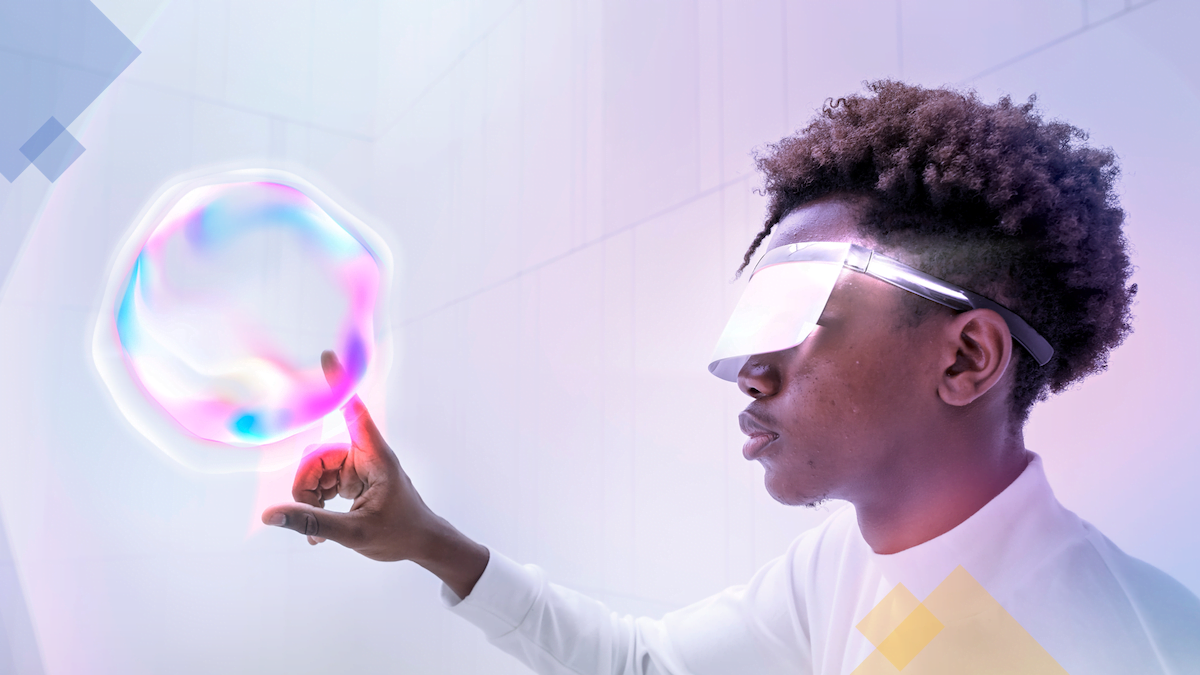The development of immersive digital content is due in large part to holograms. There are two primary ways to go about hologram creation. The first path relies on using augmented reality glasses. The holograms created this way are known as stereotypical holograms, and the most well-known example is Microsoft’s HoloLens. In this case, developers use software to create 3D images of objects superimposed on the physical world.
Realistic holograms
The second way is to create realistic holograms – a concept initiated by the physicist Dennis Gabor in 1947 – using optical displays that project physical objects. For this process, you need a monochromatic, coherent light, and it can be provided by a laser. You first split the laser into two beams through lenses.
The first beam functions as a reference beam, whereas the second one is the object beam, where you bounce the physical object whose hologram you want to create so that it hits a high-resolution photographic plate. You then reflect the reference beam directly onto this plate. This process results in an interference pattern between the two beams that reflect the physical object.
However, to make the object visible to the naked eye, you must recreate the original laser field by sending it through the interference pattern. This recreated beam is almost an exact copy of the original physical object; that’s why it looks like the object is indeed there when you look at a hologram.
Based on this technology, holographic displays reflect digital content via high-definition screens that use glass optics.
Holographic displays: use cases for immersive experiences
In metaverse-related applications, their distinctive advantages are to eliminate the need to wear smart glasses to view 3D projections and allow multiple people to simultaneously take part in the same experience.
We can use this technology to build holographic digital twins that represent 3D replicas of physical objects. However, currently, they are mostly applied for marketing purposes such as driving awareness, generating leads, and increasing sales.
For instance, using such products, you can display holograms from your existing 3D content. Looking Glass is one of the pioneers in this area. It comes with software that is integrated with primary 3D content creation tools like Unity, Blender, and Unreal so that users can seamlessly display their images created using these tools. Another holographic display provided by the same company enables the building of immersive experiences for groups. A typical use case is to create marketing campaigns that engage customers in immersive environments.
Another use case can be to amplify real-life shows or events. These kinds of holographic display applications increase interactivity and strengthen the bond between fans, artists, and brands. For example, the displays of Proto can be used to create holographic ticket sales, displays for photo-ops, interactive presentations that boost visibility and sales, and also host personalized live events for fans.
Another market leader – HYPERVSN – focuses on creating holograms that float in the air. The displays produced by this company have an ultra-fine pixel pitch of less than 0.65mm, enabling extremely detailed 3D content. Another feature is the ability to combine multiple displays to create the optimum display size. Common applications of these holographic displays are to provide potential buyers with ways to configure products through touchscreen menus, interact with the brand’s mascots, and place digital avatars as customer service representatives.
Other companies, such as Light Field Lab and SeeReal, are innovating the core technologies that underpin holographic displays. The Light Field Lab works on a technology called SolidLight that replaces physical objects with photons of light. SeeReal works towards a new market standard for displaying holograms based on a holographic 3D system that reconstructs objects and complex 3D scenes in real space.
What will determine the market size of the holographic displays?
The global market size is estimated to reach $11.65 billion by 2030, which amounts to a CAGR of 29.1%, according to research carried out by Allied Market Research. The study segmented the market into component, technology, dimension, end-use, industry vertical, and geographical region. It concluded that the lens segment would be most influential in the component segment. It’s projected that electro-holographic lenses will dominate the market in the forecasted period. Futhermore, according to the study, the surge in demand for holographic displays in the medical industry will drive the market.
Credit: Source link
































